Scallop trawler
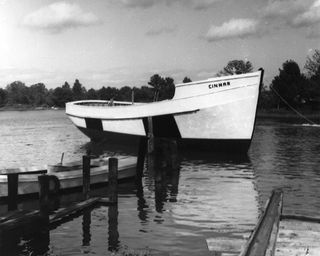
In 1974, a scallop trawler named the Cinmar dredged up a mastodon skull and a flaked blade from the ocean floor about 60 miles off the coast of the Chesapeake Bay. Together, the two finds hint that the Atlantic Coast may have been occupied by early settlers more than 14,000 years ago.
Mastodon teeth
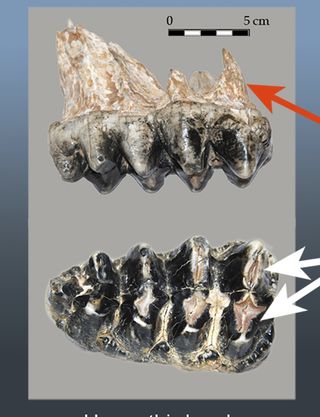
The fisherman hacked out the teeth and tusks and gave some out as souvenirs. The finds eventually made their way to the Gwynn's Island Museum in Virginia. The molars suggest the mastodon was about 30 years old when it died.
Flaked tool

The tool was made of volcanic rock and had workmanship similar to that found in Solutrean tools, which were made in Europe between 17,000 and 22,000 years ago.
Dry land
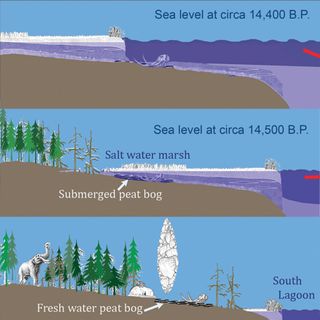
Before glaciers rose around 14,000 years ago, the area where the tool and skull were dredged was dry land. But rising sea levels turned the area into a bog, then a saltwater marsh, before the waters may have completely submerged the items.
Mammoth tusk

Characteristic red staining on the tusk comes from oxidation, which may have occurred when the tusk was submerged in a saltwater marsh.
Used knife
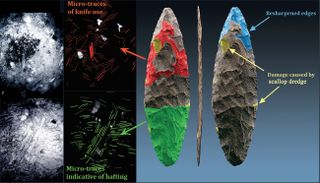
The tool may have been used to butcher an animal -- possibly the mastodon found. Microstriations and wear shown are typical of tool use.The sharp crisp edges suggest it wasn't tumbled in the surf or carried by water. Either way, the wear on the tool suggests it was on dry land at some point and then buried by sea water, which means the tool was older than 14,000 years old. That would mean people (and possibly migrants from Europe) lived on the Atlantic Coast prior to the Clovis culture.
Projectile dissolved

The weathering on the tool and the teeth and tusk suggests both spent time in a saltwater marsh. Here, a similar rhyolite knife is shown after a saltwater marsh has broken down its chemical structure.
Sign up for the Live Science daily newsletter now
Get the world’s most fascinating discoveries delivered straight to your inbox.
Tumbled surf edge
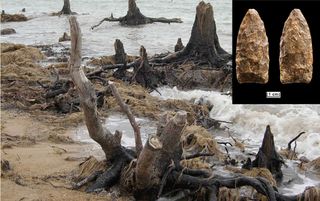
Here, a similar tool is shown with edges that were blunted by the surf.

Tia is the managing editor and was previously a senior writer for Live Science. Her work has appeared in Scientific American, Wired.com and other outlets. She holds a master's degree in bioengineering from the University of Washington, a graduate certificate in science writing from UC Santa Cruz and a bachelor's degree in mechanical engineering from the University of Texas at Austin. Tia was part of a team at the Milwaukee Journal Sentinel that published the Empty Cradles series on preterm births, which won multiple awards, including the 2012 Casey Medal for Meritorious Journalism.










